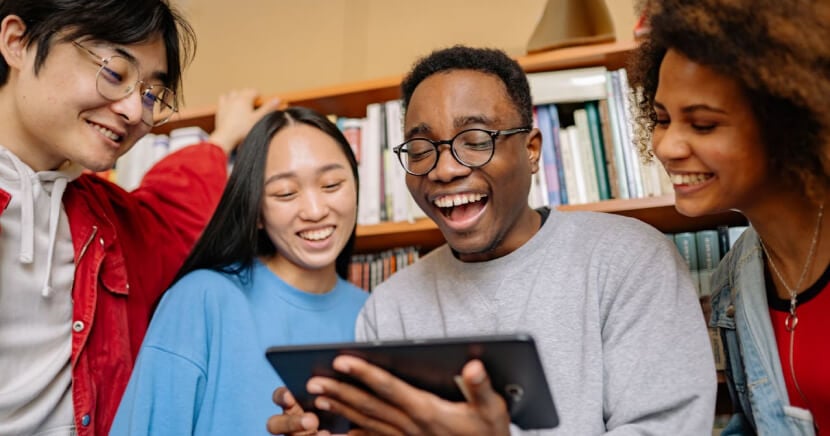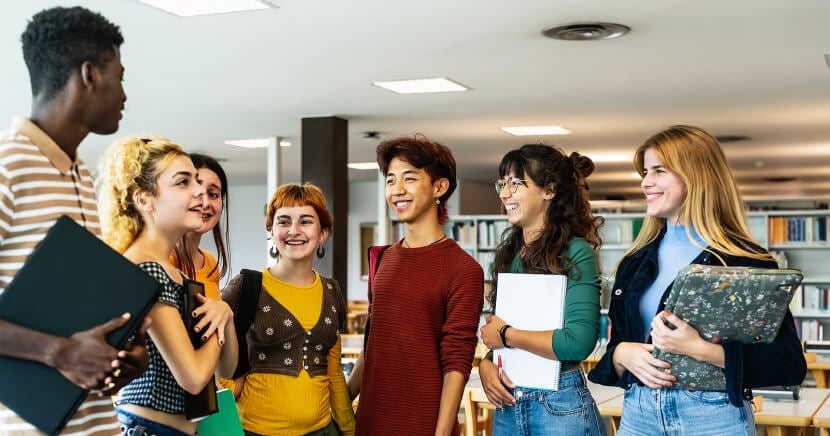Last fall, we at PressReader ran a series of blog posts on the topic of media literacy and why it is so vital now more than ever. That campaign was primarily focused on how educators (by which we meant teachers, school librarians and even parents) could introduce and reinforce media-literacy skills and critical-thinking principles in their students.
A study from Stanford University found that 96% of high school students failed to question the credibility of an online source, while two-thirds could not distinguish between news articles and ads. We wanted to help teachers do their part to improve those numbers, so we put together a Media Literacy Toolkit — an education resource designed to help parents, teachers and school librarians impart these media-literacy skills to students through interactive activities in schools or at home.
While it's crucial for schools to provide young people with education in media-literacy skills, we can’t overlook the fact that many adults could also benefit from learning how to analyze media messaging and separate fact from fiction in the messages they consume — especially online.
See also:
-
How libraries can support media literacy in an age of misinformation
-
In a world of disinformation, media literacy matters more than ever
Trust in social media?
According to Pew Research Center, half of US adults get their news at least some of the time from social media platforms such as Twitter and Facebook, and about one in five get their political news primarily from social media. In a recent Pew survey, half of 18- to 29-year-olds in the United States reported that they have some or a lot of trust in the information they get from social media sites.
This puts the share of adults under 30 who express at least some trust in information from social media at its highest-ever level and the share with trust in national news organizations (56%) at its lowest.
This is concerning for society because other data (also from Pew) suggests that people who mainly get their news in this way are less engaged and less knowledgeable.

False or unproven claims
In 2020, across five separate surveys, respondents were asked 29 different fact-based questions on a variety of news-related topics. The average proportion of respondents who answered each question correctly was lower among those who rely most on social media for political news than those who rely most on other types of news sources (with the exception of local TV).
Pew’s findings also revealed that “Even as Americans who primarily turn to social media for political news are less aware and knowledgeable about a wide range of events and issues in the news, they are more likely than other Americans to have heard about a number of false or unproven claims.”
Education combats disinformation
This shows that many adults could use some help learning techniques to identify so-called “fake news”. Librarians can help stem the tide of online disinformation by including instruction in information and media literacy in their digital-skills programming.
As the New York Times notes, “in a digital age, media literacy also includes understanding how websites profit from fictional news, how algorithms and bots work, and how to scrutinize suspicious websites that mimic real news outlets.”
At least one study (which we have cited previously) has shown that disinformation is disseminated more rapidly than the truth on Twitter. In that study, three MIT scholars looked at the diffusion of roughly 126,000 verified true and false news stories tweeted by around 3 million people more than 4.5 million times over an 11-year period.
“We found that falsehood diffuses significantly farther, faster, deeper, and more broadly than the truth, in all categories of information, and in many cases by an order of magnitude,” said Sinan Aral, a professor at the MIT Sloan School of Management and co-author of a paper detailing the findings, which was published in the journal Science in 2018.
Specific findings include:
-
False news stories are 70% more likely to be retweeted than true stories are.
-
True stories take about six times as long to reach 1,500 people as false stories take to reach the same number of people.
-
In the case of Twitter’s “cascades,” or unbroken retweet chains, falsehoods reach a cascade depth of 10 about 20 times faster than facts.
A generation gap in technology
It’s clear that people of all ages can benefit from looking at all of the messages they receive online, whether from social media, blogs or news websites, with a more critical eye. The fact is, however, that there is a distinct generation gap when it comes to technological literacy. While many of the facts and figures we have discussed so far pertain to younger adults (particularly those under 30), it is arguably the members of older generations who are at the most risk.
If they lack the techniques necessary to spot misinformation online, as McAfee points out, “Older adults can easily fall prey to scams, conspiracies, hoaxes, and false news stories online.” McAfee cites a 2019 study out of Princeton and NYU, which found that, prior to the 2016 election, Americans over 65 were seven times more likely than those under 29 to post articles from fake news domains.
Create courses for older students
Because learning is a lifelong process, you don't have to be in school to be a student. Many libraries already offer free instruction designed to teach computer skills to older adult learners in the community. Extending this to include training in media literacy can be an effective means of combating the spread of false and misleading information.
Per McAfee, participants in these workshops or courses should be encouraged to keep the following questions in mind when reading an article, watching videos, or consuming other content online:
-
Do I understand all the points of view of this story?
-
What do I think about this topic or idea?
-
Am I overly emotional and eager to share this?
-
Am I being manipulated by this content?
-
What if I’m wrong?
To further their education, librarians can also point patrons in the direction of tools and resources available through the library. These can include quality sources of journalism, including many of the 7,000-plus international newspapers and magazines on the PressReader platform, which includes trusted media outlets like The Guardian, Newsweek, The Wall Street Journal, The Globe and Mail and The Week.

Creating a community of critical thinkers
After introducing them to the basics, encourage patrons to deepen their knowledge on their own by exploring interactive online resources such the Poynter Institute’s self-paced MediaWise for Seniors.
Researchers at Stanford University used MediaWise for Seniors as the basis for a study of the effectiveness of media-literacy education in older people.
The researchers found that “The older adults who took the MediaWise for Seniors intervention showed an improved ability to accurately classify true and false news after taking the course, displayed greater comprehension of several skills important for identifying misinformation online, and were more likely to report doing research on news stories before making judgments about their veracity.”
The study’s authors reported that participants in media-literacy education courses improved their skill in accurately discerning disinformation from true news from 64% pre-intervention to 85% post-intervention.
Lifelong lessons for students of all ages
One of UNESCO’s Five Laws of Media and Information Literacy states: “Media and information literacy is not acquired at once. It is a lived and dynamic experience and process. It is complete when it includes knowledge, skills and attitudes, when it covers access, evaluation/assessment, use, production and communication of information, media and technology content.”
When you equip people at all stages of life, from grade-school students to seniors, with the principles of media literacy, you’re helping them develop critical thinking skills. This will empower them to challenge and evaluate the messages they read, hear and see in the online realm and beyond. Wherever they get their information — be it in their local morning newspaper, via YouTube videos or on an app such as PressReader — the practice of media literacy will help them consider a story from more than one perspective.
Most importantly, by educating patrons and students of all generations on media literacy, you’re teaching them how to critically evaluate information before believing — and sharing — what they consume. This valuable skill benefits society as a whole and can help create more aware and engaged global citizens of all ages.
Let us know what your library is doing to foster digital literacy skills in your community, and learn more about PressReader







